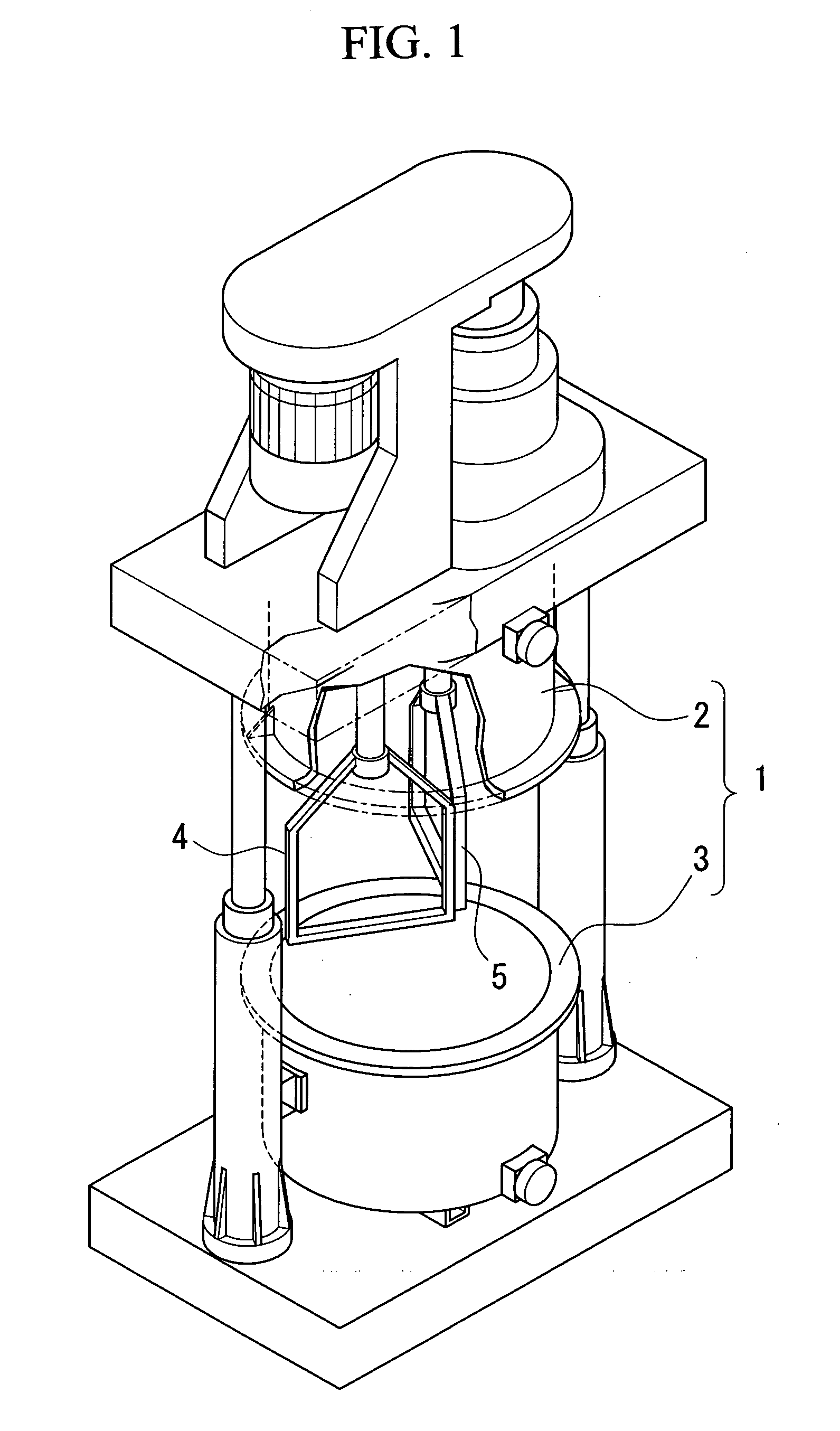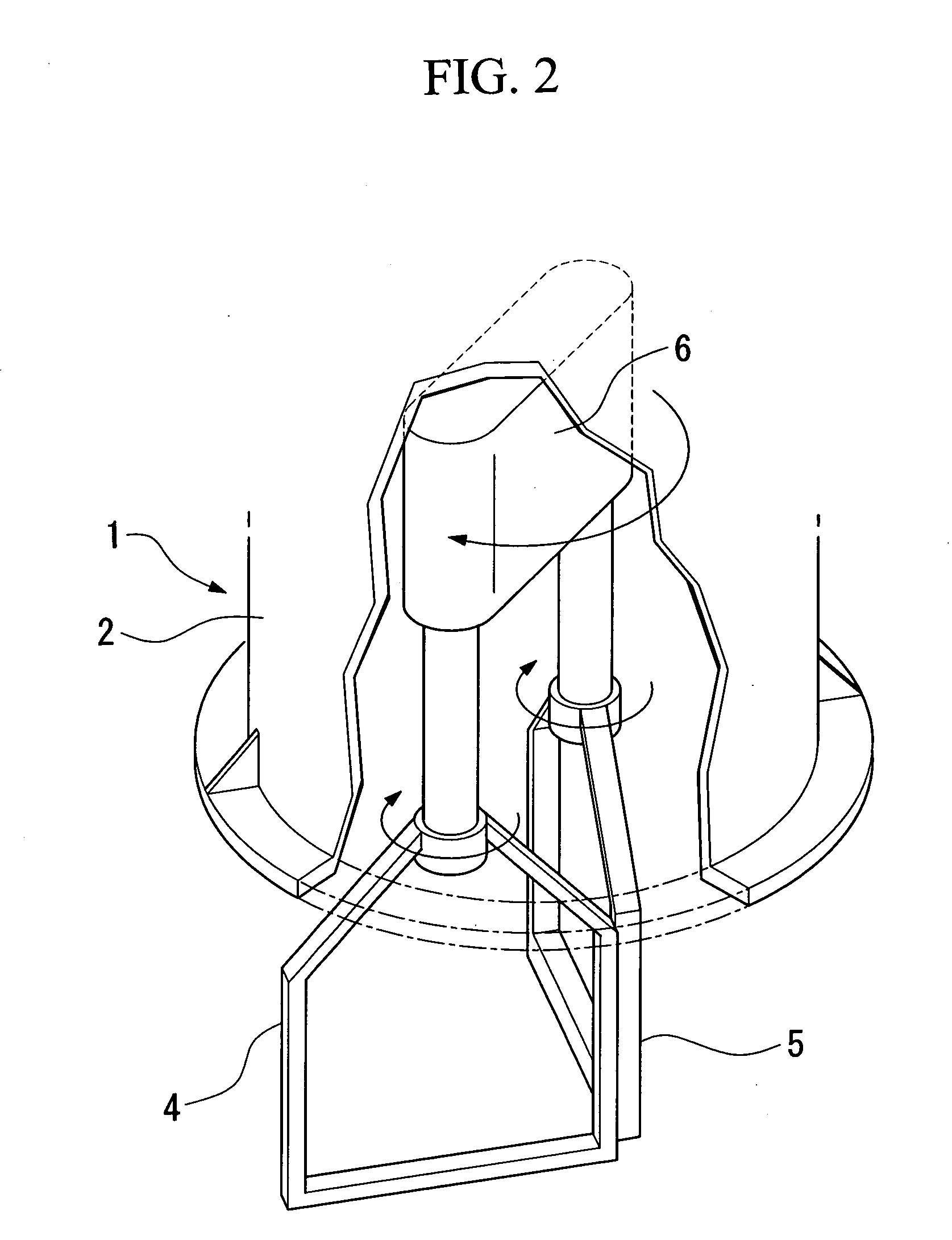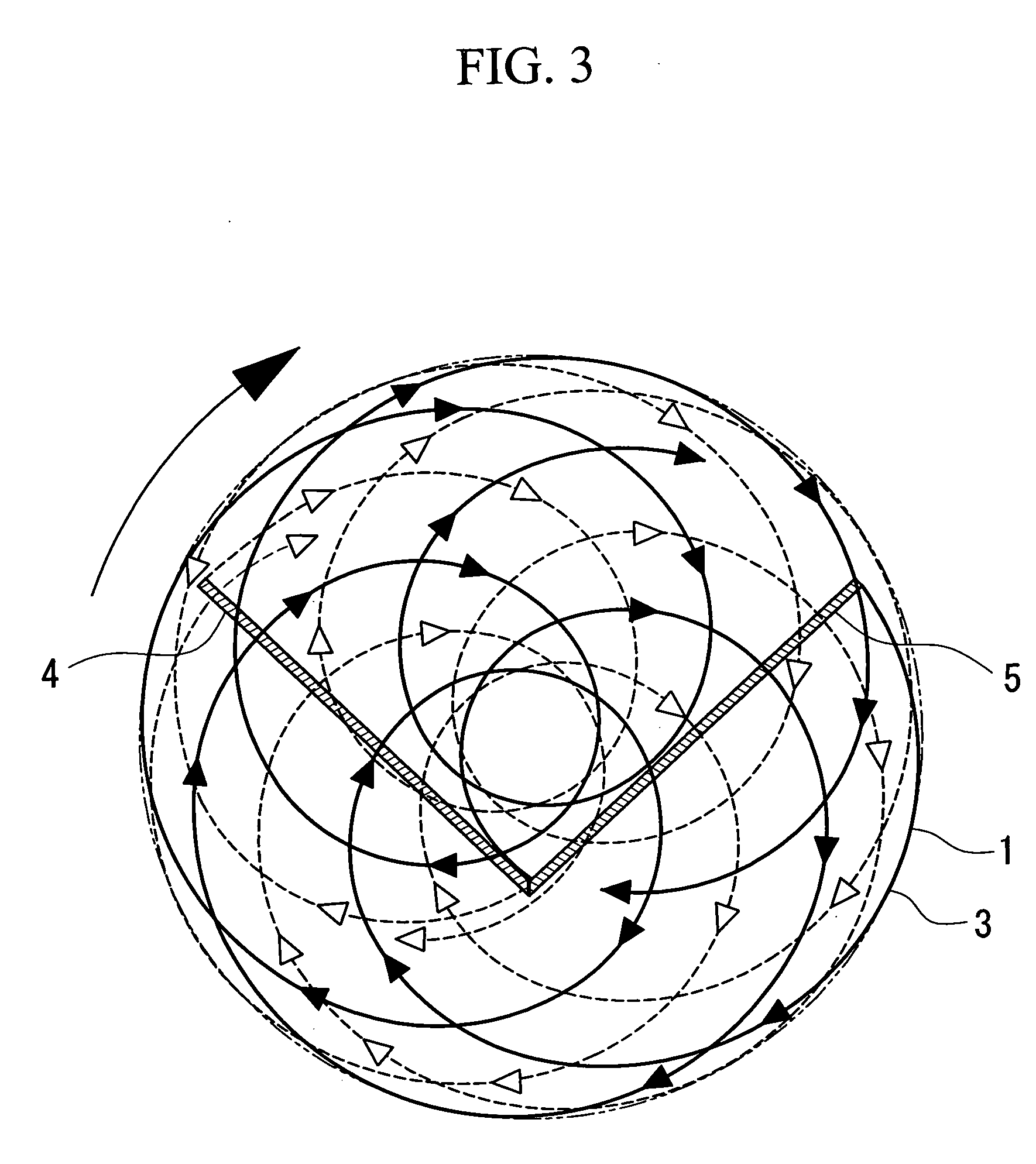Process For Producing Aqueous Pigment Dispersions For Ink-Jet Recording
- Summary
- Abstract
- Description
- Claims
- Application Information
AI Technical Summary
Benefits of technology
Problems solved by technology
Method used
Image
Examples
example 1
Production of Colored Kneaded Product
[0122]A mixture of the following composition was put into a planetary mixer having a capacity of 50 L, PLM-V-50V (made by Inoue Seisakusho Co., Ltd.), the jacket was heated, and the kneading was performed at a low number of rotations (rotation speed: 21 r. p. m., revolution speed 14 r. p. m.) until the temperature of the contents reached 60° C., and after the temperature of the contents reached 60° C., it was switched to a high speed (rotation speed: 35 r. p. m., revolution speed 24 r. p. m.), and the kneading was continued.
Resin A250 partsFASTGEN BLUE TGR (produced by Dainippon Ink &500 partsChemicals, Inc.)34 mass % aqueous solution of potassium hydroxide (KOH)110.3 parts Diethylene glycol (DEG)239 parts
[0123]The current value of the planetary mixer when switching to high-speed was 7 A. After 15 minutes from the time when the planetary mixer indicated 15 A of the maximum current value, the current value indicated 7.5 A and was stable. To the c...
example 2
Production of Colored Kneaded Product
[0125]A mixture of the following composition was blended in a stainless steel container, and the mixture was heated at 60° C. and stirred sufficiently, thereafter the mixture was put into a twin-roll apparatus heated at 130° C., thereby performing kneading.
Resin A255 partsFASTGEN BLUE TGR (produced by Dainippon Ink &510 partsChemicals, Inc.)34 mass % aqueous solution of potassium hydroxide (KOH)113 partsDiethylene glycol (DEG)122 parts
[0126]The kneading was maintained for 15 minutes after the mixture was stuck together, and thereafter the resultant colored kneaded product was taken out. The kneaded product was cooled, and thereafter was crushed by a mill into an angular powder having a particle size of 1 mm or less. At this time, the solid content concentration of the kneaded product was 87 mass %.
[0127]Production of Pigment Dispersion
Crushed kneaded product276 partsDEG271 partsIon exchanged water453 parts
[0128]A mixture of the above composition ...
example 3
Production of Colored Kneaded Product
[0139]A mixture of the following composition was put into a planetary mixer PLM-V-50V (made by INOUE SEISAKUSHO Co., Ltd.) having a capacity of 50 L, and kneading was performed under the same operating conditions as in Example 1.
Resin A150 partsCarbon black #960 (produced by Mitsubishi Chemical500 partsCo., Ltd.)DEG380 parts34 mass % aqueous solution of potassium hydroxide66.6 parts
[0140]The current value of the planetary mixer at the time of switching to high speed was 5 A. Kneading was maintained for 30 minutes after the planetary mixer indicated the maximum current value of 15 A, and the current value became 8 A. The resultant colored product was kneaded for approximately 2 hours, while adding 20 parts of ion exchanged water at various times thereto, such that the total amount of exchanged water became 100 parts.
[0141]Production of Pigment Dispersions
[0142]Subsequently, kneading was maintained, while adding ion exchanged water thereto of 50 p...
PUM
| Property | Measurement | Unit |
|---|---|---|
| Fraction | aaaaa | aaaaa |
| Fraction | aaaaa | aaaaa |
| Fraction | aaaaa | aaaaa |
Abstract
Description
Claims
Application Information
 Login to View More
Login to View More - R&D
- Intellectual Property
- Life Sciences
- Materials
- Tech Scout
- Unparalleled Data Quality
- Higher Quality Content
- 60% Fewer Hallucinations
Browse by: Latest US Patents, China's latest patents, Technical Efficacy Thesaurus, Application Domain, Technology Topic, Popular Technical Reports.
© 2025 PatSnap. All rights reserved.Legal|Privacy policy|Modern Slavery Act Transparency Statement|Sitemap|About US| Contact US: help@patsnap.com



